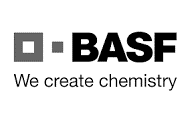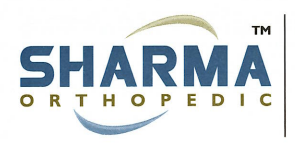Note C(underlined) of heading 3402 exclusions, negates the classification of the Silicon Emulsion under 3402. The surface activity is subsidiary to major function of the emulsion, the lubricating function. Please refer to the definitions of a silicon emulsion as well as a mold release agent. This exclusion confirms that surface active agents are also classifiable under heading 3403. When this exclusion is considered together with the function of the emulsion which is explicitly stated in 3403 (mold release preparations based on lubricants), then we are to classify in 3403 by application of Rule 1 of classification rules.
9th February, 2022
The Commissioner, Customs and Border Control
Kenya Revenue Authority
P.O Box 48240
Nairobi
Dear Madam,
REF: Objection to Classification of Silicon Emulsion
We refer to your letters REF: HQ/PCA/RRI/518/2021 dated 21st January, 2022 and …………………………………….. indicating that Silicon Emulsion is classifiable under Sub-Heading of the Common External Tariff, 3402.90.00, thereby resulting in a demand note of Kshs 13,948,623. We are writing to object to that classification under section 229 of EACCMA. for the following reasons.
Reasons for Objection
Questions to be Answered
1)What is silicon Emulsion and its functions
2)Are there organic surface-active substances in heading 3403 and what’s their role
3)What determines whether to classify surface active agents in 3402 or 3403
4)What instructions does the nomenclature give us on the how to classify substances in chapter 34
What is Silicon Emulsion (Answers below extracted from public sources)
(1) Silicone oil emulsion is silicone oil based aqueous emulsion containing non-ionic surfactants. Silicone oil emulsion is mainly used as a mold release agent in foundries. It also has wide applications in the rubber and plastic industries.
(2) Silicone fluids, or oils as they are sometimes known, have been used for many decades as excellent lubricants for polymers and rubbers because, by nature, they have very low coefficients of friction.
(3) Silicone oils are primarily used as lubricants, thermic fluid oils or hydraulic fluids. They are excellent electrical insulators and, unlike their carbon analogues, are non-flammable.
(4) As an oil, it has all the best qualities of a lubricant… non-reactive to most substances, maintains its greasiness in extreme temperature ranges, low friction, and does not oxidize. These same qualities make it an excellent rubber product in hostile environments. Silicone in its many forms is used in airplanes, prosthetic devices, body implants, as a waterproofing for paper and ceramics, as a caulk, adhesive, heat resistant insulator, and as a lubricant.
(5) Because silicone oil is super slippery and minimally reactive, it can lubricate most anything. It works especially well on porous items, such as plastic parts, but is a good lubricant on locks, hinges, and guns.
What is a Mold Release Agent?
(1) Mold release agents are used to prevent a substrate bonding to a molding surface. Without the use of a mold release barrier, the material being cast would fuse to the mold. This can have a significant impact on the quality and effectiveness of the molding process. Mold release agents are an essential part of the rubber, plastic, and composite molding process.
(2) Mold release agents work by creating a barrier between the substrate and the surface of the mold. This barrier eliminates adhesion between the two materials, preventing mold damage and ensuring quick and easy release from the mold. The coating is applied to the surface of the mold before the substrate is cast. Semi-permanent mold release agents do not have to be reapplied after every use but will continue to provide a barrier for several applications. Mold release agents are also known as anti-blocking agents, surface lubricants, parting agents, and slip aids.
(3)A release agent (also mold release agent, release coating, or mold release coating) is a chemical used to prevent other materials from bonding to surfaces. It can provide a solution in processes involving mold release, die-cast release, plastic release, adhesive release, and tire and web release.
(4) Release agents provide the critical barrier between a molding surface and the substrate, facilitating separation of the cured part from the mold. Without such a barrier in place, the substrate would become fused to the mold surface, resulting in difficult clean-up and dramatic loss in production efficiency. Even when a release agent is used, factors such as irregular applications or improper release agent choice may have a dramatic effect on the quality and consistency of the finished product. Many kinds of release agents are used. They are waxes, fatty ester, silicones, and metallic soaps.
(5) Silicone emulsions are silicone oils dispersed in an aqueous system. Emulsions are ideal for surface treatments, being easy to apply, and are simple to prepare
Emulsion silicones are used in:
- Rubber and plastics as release agents and lubricants
- Food trays and plastic serving dishes as release agents
- Car polishes and household cleaners to improve protection, resistance, gloss and spread ability
- Textile finishing to enhance feel, water repellence and reduce the need for ironing
- Perlite, vermiculite and clay and other building materials to improve water repellence and protect against dampness
- Printing and papermaking for lubrication and as an antistatic agent.
Analysis of Section VI Notes
Section VI Explanatory Notes
PRODUCTS OF THE CHEMICAL OR ALLIED INDUSTRIES
4.- Where a product answers to a description in one or more of the headings in Section VI by virtue of being described by name or function and also to heading 38.27, then it is classifiable in a heading that references the product by name or function and not under heading 38.27.(WCO Version 2022)
Section Note 4 provides that heading 38.27 does not take precedence over other headings in Section VI that reference goods by name or function. Thus, for example, goods that could fall under the first category of headings 38.14, as “organic composite solvents” and heading 38.27, are to be classified under heading 38.14, even though the texts of both the first category of heading 38.14 and heading 38.27 have the same phrase “not elsewhere specified or included”. It should be noted, however, that heading 38.27 does take precedence over heading 38.24, as this heading does not reference such goods by name or function.
Silicone Emulsion is surface active; therefore, it can be classified under 3402.90.00 as per KRAs proposal, which is incorrect because surface activity is a characteristic of the substance but not its major function. Is the silicone Emulsion mentioned by name in section VI? Yes, it is. Note A Explanatory Notes heading 3403 extract: ‘’ These synthetic lubricants, which include “greases” based on silicones or jet lube oils: Note F(2) Explanatory Notes Heading 3403 extract: Mixtures containing silicone greases or oils: Is the function(Mold release) listed in heading? Yes, it is; Heading 3403 description ‘’ mold release preparations, based on lubricants’’
By application of the precedent set by Note 4 of the section notes quoted above, silicon emulsion is classifiable under the heading which references the function, therefore heading 3403, the surface activity is not a major factor. Bear in mind that substances in 3402 and 3403 are surface active.
Heading 3402 Explanatory Notes
This heading does not cover:
(a) Shampoos or preparations for foam baths, whether or not containing soap or other surface-active agents (Chapter 33).
(b) Paper, wadding, felt and nonwovens, impregnated, coated, or covered with detergent (heading 34.01).
(c) Preparations, containing surface-active agents where the surface-active function is either not required or is only subsidiary to the main function of the preparation (headings 34.03, 34.05, 38.08, 38.09, 38.24, etc., as the case may be).
(d) Abrasive preparations containing surface-active agents (scouring pastes and powders) (heading 34.05).
(e) Water-insoluble naphthenates, petroleum sulphonates and other water-insoluble surface-active products and preparations. They fall in heading 38.24, provided they are not included in a more specific heading
Note C(underlined) of heading 3402 exclusions, negates the classification of the Silicon Emulsion under 3402. The surface activity is subsidiary to major function of the emulsion, the lubricating function. Please refer to the definitions of a silicon emulsion as well as a mold release agent. This exclusion confirms that surface active agents are also classifiable under heading 3403. When this exclusion is considered together with the function of the emulsion which is explicitly stated in 3403 (mold release preparations based on lubricants), then we are to classify in 3403 by application of Rule 1 of classification rules.
Heading 3403 Explanatory Notes
34.03 – Lubricating preparations (including cutting-oil preparations, bolt or nut release preparations, anti-rust or anti-corrosion preparations and mold release preparations, based on lubricants) and preparations of a kind used for the oil or grease treatment of textile materials, leather, furskins or other materials, but excluding preparations containing, as basic constituents, 70 % or more by weight of petroleum oils or of oils obtained from bituminous minerals.
- Containing petroleum oils or oils obtained from bituminous minerals:
3403.11 – – Preparations for the treatment of textile materials, leather, furskins or other materials
3403.19 – – Other
- Other:
3403.91 – – Preparations for the treatment of textile materials, leather, furskins or other materials
3403.99 – – Other
The function of the Silicon Emulsion is stated in the heading 3403 quoted above, therefore by application of Rule 1, it is classifiable under heading 3403. ‘’ mold release preparations’’ based on lubricants. Is Silicon Emulsion a lubricant? Yes. Please refer to the definition or functions of the substance.
Heading 3403 Explanatory Notes
Provided they do not contain, as basic constituents, 70 % or more by weight of petroleum oils or oils obtained from bituminous minerals (see heading 27.10), this heading includes, inter alia, prepared mixtures of the following types
- F) Mold release preparations based on lubricants, used in various industries (e.g., plastics, rubber, construction, foundry), such as :
(1) Mineral, vegetable or animal oils or other fatty substances (including those sulphonated, oxidised or hydrogenated) mixed or emulsified with waxes, lecithin or antioxidants.
(2) Mixtures containing silicone greases or oils.
(3) Mixtures of powdered graphite, talc, mica, bentonite or aluminium with oils, fatty substances, waxes, etc.
The silicon emulsion (silicone oils) is explicitly mentioned in Note F (2) as classifiable under 3403.
Heading 2710 Exclusions
Waste oils are waste containing mainly petroleum oils and oils obtained from bituminous minerals (as described in Note 2 to this Chapter), whether or not mixed with water.
The heading does not include:
(b) Preparations containing less than 70 % by weight of petroleum oils or of oils obtained from bituminous minerals, e.g., textile greasing or oiling preparations and other lubricating preparations of heading 34.03 and hydraulic brake fluids of heading 38.19.
Please note that silicon emulsion is a silicone oil. Exclusion notes of heading 2710 direct the classification to 3403
Note 3307 Explanatory Notes
This heading covers:
(III) Bath preparations, such as perfumed bath salts and preparations for foam baths, whether or not containing soap or other organic surface-active agents (see Note 1 (c) to Chapter 34).
Preparations for washing the skin, in which the active component consists wholly or partly of synthetic organic-surface active agents (which may contain soap in any proportion), in the form of liquid or cream and put up for retail sale, are classified in heading 34.01. Such preparations not put up for retail sale are classified in heading 34.02.
This note provides us with guidance on products classifiable under 3402. This are substances in which the surface activity is the major component. Therefore, by precedent, the silicon emulsions will not be classified under 3402, because the surface activity is minor to its major functions of oiling, releasing, lubricating.
Notes to Chapter 15
These headings do not cover edible or inedible mixtures or preparations, or vegetable fats and oils that have been chemically modified (heading 15.16, 15.17 or 15.18, unless they have the character of products classified elsewhere, e.g., in headings 30.03, 30.04, 33.03 to 33.07, 34.03
This exclusion points us to classify silicone oils that have been chemically modified to 3403
Notes to heading 27.15
The heading also excludes
(f) Lubricating preparations of heading 34.03.
This note points us to classify oils to 3403
Notes to heading 34.05
(c) Degras and artificial degras (heading 15.22); other oils and greases for leather dressing (Chapter 15,
headings 27.10, 34.03, 38.24, etc.).
This note points us to classify oils to 3403
Notes to Chapter 39
2.- This Chapter does not cover:
(a) Lubricating preparations of heading 27.10 or 34.03;
This note points us to classify oils to 3403
Notes to Heading 39.10
39.10 – Silicones in primary forms.
The silicones of this heading are non-chemically defined products containing in the molecule more than one silicon-oxygen-silicon linkage, and containing organic groups connected to the silicon atoms by direct silicon-carbon bonds.
They have a high stability and may be either liquid, semi-liquid or solid. The products include
silicone oils, greases, resins and elastomers.
Silicone oils and greases are used as lubricants remaining stable at high or low temperatures, as water-repellent impregnating products, as dielectric products, as foam inhibitors, as mold release agents, etc. Lubricating preparations consisting of mixtures containing silicone greases or oils fall in heading 27.10 or 34.03 as the case may be (see corresponding Explanatory Notes).
This note explicitly refers us to heading 3403 for classification of the mold release agents
We have attached KRA rulings for headings 3402 and 3403 for your reference. Please take note that the items classifiable under heading 3402 are those where the surface activity is the major characteristic, while 3403 has all lubricating oils, where the major function is lubricating and oiling for ease of separation of items from the mold. The surface activity of substances of 3403 is to increase the efficiency of the lubricating oils.
The Silicon Emulsion is therefore an oil whose major function is mold release which relies heavily on its lubricating and oiling properties. The surface activity is subsidiary to its usage. The tariff classification is therefore 3403.99.00
We are ready to avail technical experts to take your officers through the properties and functions of the silicon emulsion. We also request for a reference to a KRA tariff expert panel to decide on this is case. There has been considerable communication between us and the Post Clearance Audit section (PCA), as referenced above, but we are not getting conclusive or satisfactory guidance on our options, given that we have contested their proposed classification. The final option by PCA, is a reference to the Tax Tribunal, yet we feel that the classification could be determined by experts at KRA for our sake and that of the industry. The product brief from the supplier and Section VI Notes from the World Customs Organisation 2022 Nomenclature Version is attached at the end of this letter for ease of reference.
Please consider the issues raised above and either set aside the demand letter or make a binding decision on the tariff classification of this commodity.
Yours faithfully
Janron Consult
PRODUCTS OF THE CHEMICAL OR ALLIED Section VI
INDUSTRIES
Notes.
1.- (A) Goods (other than radioactive ores) answering to a description in heading 28.44 or 28.45 are to be classified in those headings and in no other heading of the Nomenclature.
(B) Subject to paragraph (A) above, goods answering to a description in heading 28.43, 28.46 or 28.52 are to be classified in those headings and in no other heading of this Section.
2.- Subject to Note 1 above, goods classifiable in heading 30.04, 30.05, 30.06, 32.12, 33.03, 33.04, 33.05, 33.06, 33.07, 35.06, 37.07 or 38.08 by reason of being put up in measured doses or for retail sale are to be classified in those headings and in no other heading of the Nomenclature.
3.- Goods put up in sets consisting of two or more separate constituents, some or all of which fall in this Section and are intended to be mixed together to obtain a product of Section VI or VII, are to be classified in the heading appropriate to that product, provided that the constituents are :
(a) having regard to the manner in which they are put up, clearly identifiable as being intended to be used together without first being repacked;
(b) presented together; and
(c) identifiable, whether by their nature or by the relative proportions in which they are present, as being complementary one to another.
4.- Where a product answers to a description in one or more of the headings in Section VI by virtue of being described by name or function and also to heading 38.27, then it is classifiable in a heading that references the product by name or function and not under heading 38.27.
GENERAL
Note 1.
Under the provisions of paragraph (A) of this Note, all radioactive chemical elements and radioactive isotopes, and compounds of such elements and isotopes (whether inorganic or organic, and whether or not chemically defined), are classified under heading 28.44, even though they could also fall under some other heading of the Nomenclature. Thus, for example, radioactive sodium chloride and radioactive glycerol fall in heading 28.44 and not in heading 25.01 or 29.05. Similarly, radioactive ethyl alcohol, radioactive gold and radioactive cobalt are in all circumstances classified in heading 28.44. It should be noted, however, that radioactive ores are classified in Section V of the Nomenclature.
In the case of non‑radioactive isotopes and their compounds, the Note provides that these (whether inorganic or organic, and whether or not chemically defined) are classified in heading 28.45 and not elsewhere in the Nomenclature. Thus, the isotope of carbon is classified under heading 28.45 and not under heading 28.03.
Paragraph (B) of the Note provides that goods described in heading 28.43, 28.46 or 28.52 are to be classified under whichever of those headings is appropriate and under no other heading in Section VI, provided always they are not radioactive or in the form of isotopes (in which case they are classified in either heading 28.44 or heading 28.45). This paragraph of the Note provides, therefore, that, e.g., silver caseinate is classified in heading 28.43 and not in heading 35.01, and that silver nitrate, even when put up for retail sale ready for photographic use, is classified in heading 28.43 and not in heading 37.07.
It should be noted, however, that headings 28.43, 28.46 and 28.52 take precedence only over the other headings in Section VI. Where goods described in heading 28.43, 28.46 or 28.52 are also covered by headings in other Sections of the Nomenclature, the classification of such goods is dependent on the application of any relevant Section or Chapter Notes and of the General Rules for the interpretation of the Harmonized System. Thus gadolinite, a compound of rare‑earth metals and therefore covered by heading 28.46 is classified in heading 25.30 because Note 3 (a) to Chapter 28 excludes all mineral products of Section V.
Note 2.
Section Note 2 provides that goods (other than those described in heading 28.43 to 28.46 or 28.52) which are covered by heading 30.04, 30.05, 30.06, 32.12, 33.03, 33.04, 33.05, 33.06, 33.07, 35.06, 37.07 or 38.08 by reason of being put up in measured doses or for retail sale, are to be classified in those headings notwithstanding that they could also fall in some other heading of the Nomenclature. For example, sulphur put up for retail sale for therapeutic purposes is classified inheading 30.04 and not in heading 25.03 or 28.02, and dextrin put up for retail sale as a glue is classified in heading 35.06 and not in heading 35.05.
Note 3.
This Note deals with the classification of goods put up in sets consisting of two or more separate constituents, some or all of which fall in Section VI. The Note is, however, limited to sets of which the constituents are intended to be mixed together to obtain a product of Section VI or VII. Such sets are to be classified in the heading appropriate to that product provided that the constituents meet conditions (a) to (c) of the Note.
Examples of goods in such sets are dental cements and other dental fillings of heading 30.06 and certain varnishes and paints of headings 32.08 to 32.10 and mastics, etc., of heading 32.14. As regards the classification of goods put up without a necessary hardener, ‑ see, in particular, General Explanatory Note to Chapter 32 and Explanatory Note to heading 32.14.
It should be noted that goods put up in sets consisting of two or more separate constituents, some or all of which fall in Section VI, intended to be used successively without prior mixing, are not covered by Note 3 to this Section. Such goods put up for retail sale are to be classified by application of the General Interpretative Rules (generally Rule 3 (b)); in the case of those not put up for retail sale the constituents are to be classified separately.
Note 4.
Section Note 4 provides that heading 38.27 does not take precedence over other headings in Section VI that reference goods by name or function. Thus, for example, goods that could fall under the first category of headings 38.14, as “organic composite solvents” and heading 38.27, are to be classified under heading 38.14, even though the texts of both the first category of heading 38.14 and heading 38.27 have the same phrase “not elsewhere specified or included”. It should be noted, however, that heading 38.27 does take precedence over heading 38.24, as this heading does not reference such goods by name or function.
—————————————————————————————————————————————–
Janron Consult, Tax Consultant Kenya, Customs Tax Consultant Kenya, Tax Advisory Kenya
Talk to Janron Consult for the following:
Ministry of Health Exemptions
Treasury Exemptions
Advance Ruling Application to KRA
Objection to KRA Rulings on Customs Value
Objections to KRA Rulings on HS Classification








